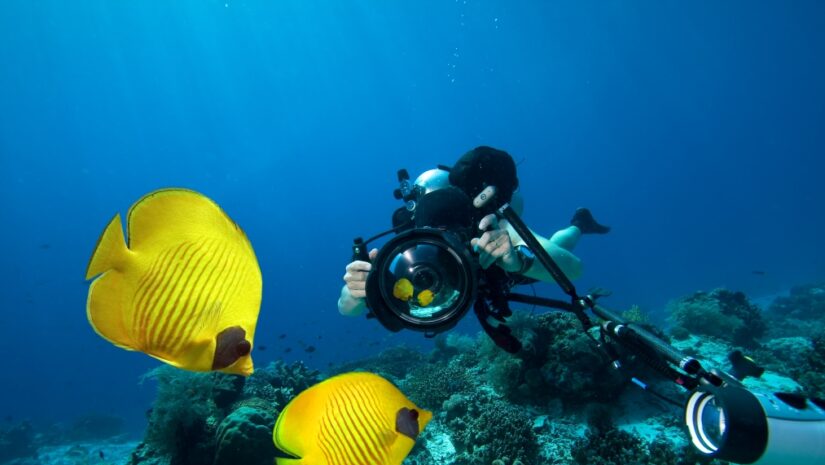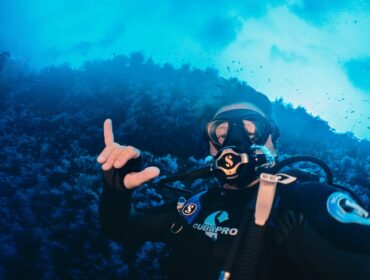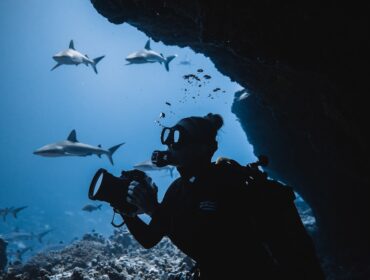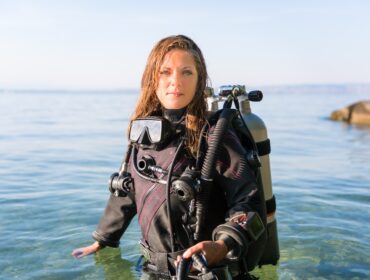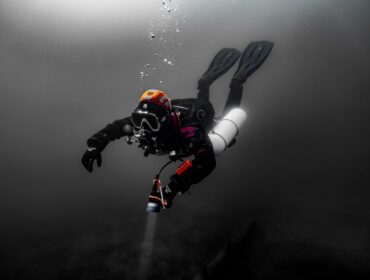You’re kneeling on the sandy bottom, waiting for your buddy to catch up. Again. You’ve signaled three times, checked your SPG twice, and the sea turtle you were watching has long since drifted off. Sound familiar?
For many divers, the scuba buddy system is a lifeline – a shared responsibility, a source of comfort, and sometimes, a friendship originating from 30 feet below the surface. But for others, it can feel like a frustrating tether. That’s where the idea of solo scuba diving starts to hold real appeal.
But diving alone isn’t just a matter of preference. It raises big questions: Is solo scuba diving safe? What skills and gear do you need? And where does it fit ethically within a sport built around mutual support?
In this article, we’ll explore the pros and cons of buddy diving vs. going solo, cut through the myths, and help you decide what’s right for your diving style and, most importantly,your safety.
What Is Buddy Diving?
The buddy system is one of the first things you learn in your open water course. It’s the idea that two divers descend, explore, and ascend together. They keep an eye on one another, assist if needed, and share the responsibility for a safe dive.
This approach has its roots in military diving, where redundancy and teamwork were vital. As recreational scuba evolved, the buddy system became the norm, not just for safety, but for social reasons too. After all, who doesn’t love sharing a post-dive story with the person who lived it beside you?
Benefits of Buddy Diving
The buddy system offers a lot more than company. Done well, it can significantly increase your margin for safety.
- Redundancy: You and your buddy act as backup life support systems for each other, from alternate air sources to problem-solving.
- Emergency response: Whether it’s a cramp, entanglement, or low-on-air scenario, having a buddy nearby can prevent a minor issue from becoming serious.
- Shared decision-making: Two sets of eyes and brains often make smarter choices than one.
- Psychological comfort: Diving can be stressful, especially in currents, overhead environments, or poor visibility. Knowing someone has your back builds confidence.
- Debriefing and learning: Buddy diving lets you reflect and grow through shared observations.
Challenges of the Buddy System
While the buddy system is built on trust and teamwork, it doesn’t always go smoothly. A mismatched buddy pair, where one diver burns through air quickly or struggles with buoyancy, can throw off the entire rhythm of a dive. Communication can also be a challenge, especially if your buddy isn’t great at staying close or signaling clearly underwater.
Even on the surface, delays during gear checks or extended surface intervals can eat into dive time. And sometimes, splitting your attention between the environment and your partner means you miss those quiet, magical moments that make diving special in the first place.
While buddy diving is the foundation of most training agencies, some experienced divers choose to take additional certification so they can dive safely on their own.
What Is Solo Diving?
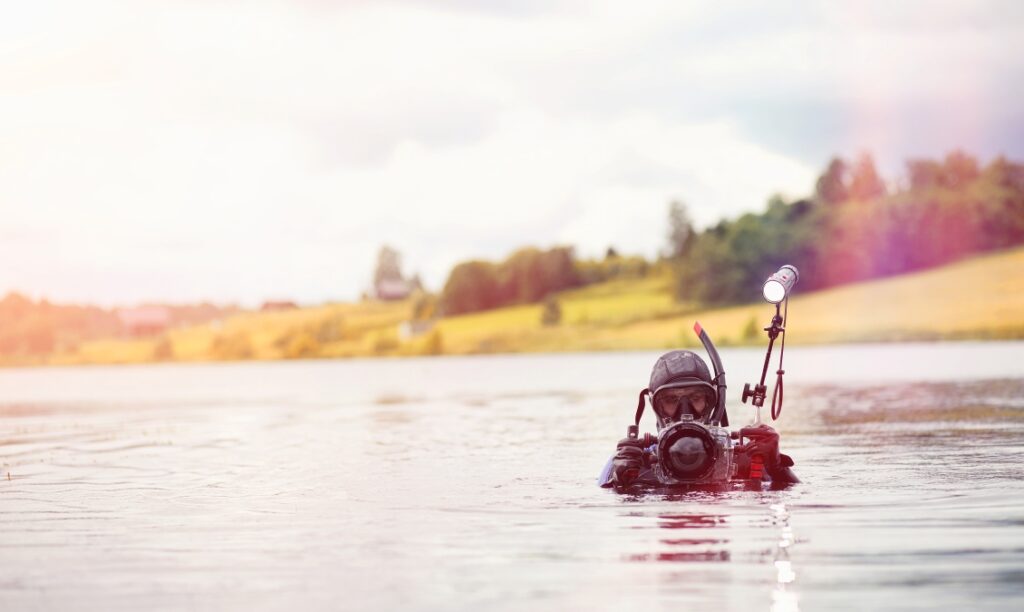
There is a growing number of experienced divers choosing to go it alone, but with the right training and mindset. Solo scuba diving challenges the idea that you always need a partner to dive safely, instead putting full responsibility on the individual. It’s not for everyone, but for those who prepare properly, it can be one of the most rewarding ways to explore the underwater world.
Definition and Misconceptions
The idea of solo scuba diving tends to raise eyebrows, especially from those who learned to dive in strict buddy-pair systems. But solo scuba diving isn’t about breaking rules or chasing thrills. It’s about careful planning, specialized training, and carrying the right gear to become fully self-reliant underwater.
At its core, solo diving means diving without a partner, but it doesn’t mean diving without a plan. It’s a style often chosen by underwater photographers, survey divers, or those exploring familiar dive sites at their own pace. The key difference? You’re prepared to handle any situation, from lost masks to out-of-air emergencies, without help.
Advantages of Solo Diving
One of the biggest draws of solo diving is freedom. You control the pace, the route, the duration, and the dive objective without needing to compromise.
You’re not waiting on someone to equalize, conserve air, or surface early. It’s just you and the underwater world, with no pressure to communicate or coordinate. For some divers, especially photographers or those who enjoy introspection, that solitude is pure bliss. It also helps build confidence, but the kind that comes from relying on your own skills and instincts.
Real Risks and Challenges
Of course, that same independence can be a double-edged sword. There’s no one to notice if you get disoriented, suffer equipment failure, or face a medical emergency. Solo divers must be hyper-aware of their limits, double up on critical gear, and plan every dive with precision.
It can also be mentally challenging. Not every diver is comfortable with the idea of being alone in open water. Even experienced divers can underestimate the psychological pressure that comes with that silence.
Safety Considerations for Both Approaches
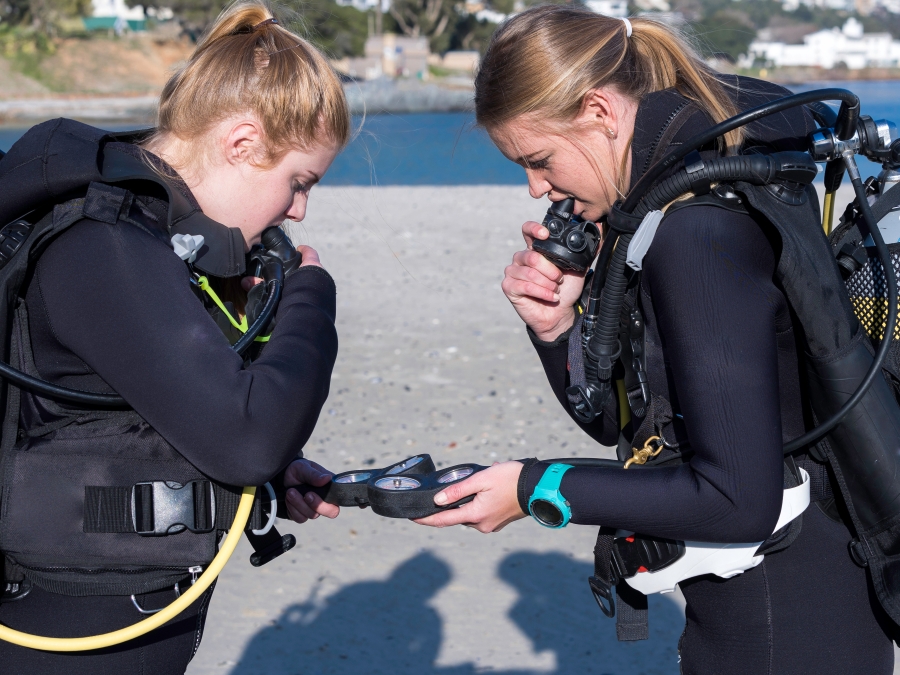
Both styles of diving carry risks, some of which are shared and some of which are unique. Understanding these risks is the key to making informed decisions. It’s not simply about having a plan, but also knowing your limits and recognizing changing conditions and being prepared to act when things go wrong.
At their core, all dives have the same potential hazards: equipment malfunction, poor visibility, strong currents, entanglement, or simply making a bad call. Panic, task loading, and poor situational awareness don’t discriminate based on whether you’re diving alone or with someone else. Even divers with hundreds of logged dives can find themselves in trouble if they become complacent. That’s why consistent pre-dive checks, environmental awareness, and solid dive planning matter – no matter how you dive!
For buddy divers, safety starts with communication and coordination. Agreeing on a dive plan, staying within sight, and regularly checking on each other can prevent small issues from escalating. Practicing out-of-air drills and hand signals also helps you act quickly under pressure.
For solo divers, preparation goes even deeper. Redundant systems are a must. Think backup air sources, multiple cutting tools, and extra signaling devices. Perhaps more importantly, solo divers need a calm mindset, a conservative dive plan, and the discipline to call a dive the moment something feels off.
In both cases, realistic self-assessment is your best safety tool. Ask yourself: Am I rested, focused, and properly equipped? Am I diving within my training and experience level? That kind of honesty keeps you safe, whether you’ve got someone by your side or not.
Certification and Training
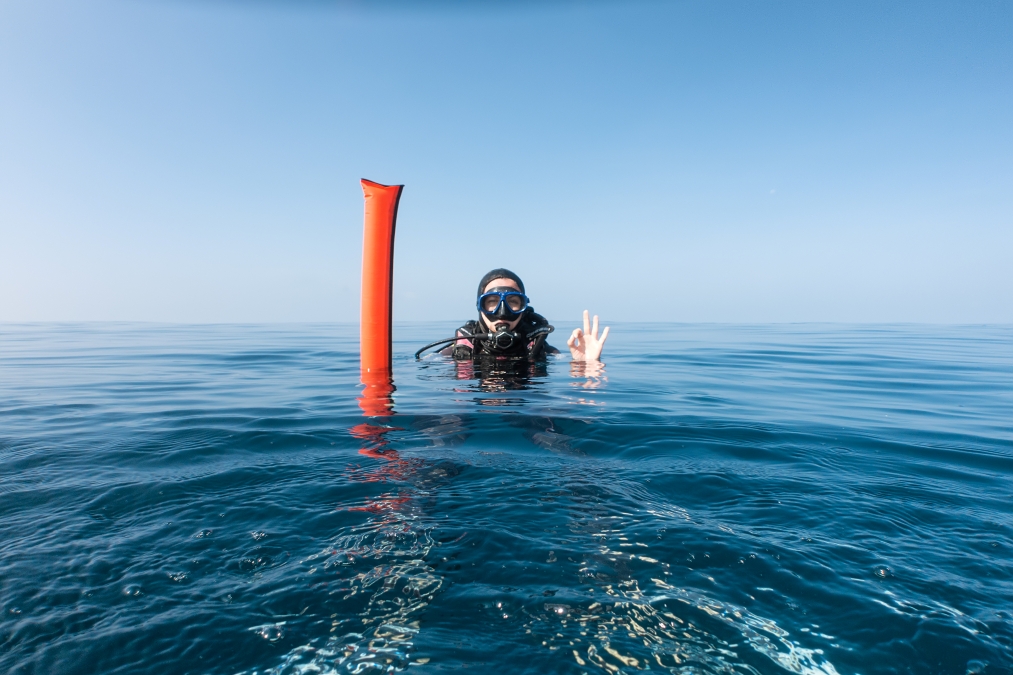
Before you can choose the best style of diving for you, it’s important to understand what you’re actually trained and allowed to do. Most scuba certifications are built around the buddy system, and diving solo without the proper training and equipment isn’t just risky – it can void insurance, break local laws, or violate dive operator policies.
However, with the right experience and further education, solo diving can become a safe and legitimate option.
Buddy-Based Certifications
Almost every entry-level and advanced certification is grounded in buddy diving principles. These courses teach team-based skills like sharing air, emergency ascents, and buddy checks.
Even technical diving courses, which introduce more complex gear and procedures, are typically designed around team awareness and communication. So unless you’re specifically certified for solo diving, you should always dive with a buddy.
Solo Diving Certifications
For experienced divers who want the option to dive alone, there are dedicated certifications that focus on self-reliance and redundancy. Courses like the PADI Self-Reliant Diver or SDI Solo Diver teach you how to plan solo dives, manage risk, and use backup equipment effectively. To enroll, you typically need:
- An advanced certification
- A minimum number of logged dives (often 100+)
- Strong air management and navigation skills
These programs emphasize mental readiness as much as technical skills. You’ll learn to identify when a solo dive is appropriate and when it’s not. Most importantly, you’ll learn to handle emergencies without relying on anyone else.
Ethical Considerations in the Diving Community
The buddy system has long been promoted not just for safety, but for its sense of community, accountability, and mutual care. Diving with a partner means someone is watching out for you and you’re doing the same for them.
Some divers and instructors worry that normalizing solo diving sends the wrong message, especially to beginners who may not yet understand the risks involved. That’s why many dive operators prohibit solo diving, even if you’re certified – especially in unfamiliar environments, strong currents, or remote areas.
On the other hand, experienced divers argue that with the right training, solo diving is no more unethical than cave diving or deep technical dives, it’s just a different skill set. What matters most is that divers follow their training, communicate clearly with dive operators, and don’t take unnecessary risks.
At its core, the ethical responsibility is the same: protect yourself, respect the environment, and don’t endanger others. Whether diving alone or in a team, those values should always lead your decisions.
Essential Gear for Solo Diving
Solo divers must carry redundant life-support systems since there’s no one else to bail them out in an emergency. This means a higher level of planning and more gear and, of course, knowing how to use it.
Key solo diving gear:
- Redundant air supply (e.g., pony bottle, twinset, or sidemount system)
- Backup dive computer and depth/timing instruments
- Compass and navigation tools
- At least two cutting devices (e.g., dive knife and line cutter)
- Audible and visual surface signaling devices (whistle, mirror, SMB, strobe)
- Backup mask (especially for tech or deep solo dives)
- Wet notes or slate for pre-planned emergency procedures
Carrying this extra gear is extremely important. You’re taking full responsibility for your dive, and that starts with being prepared.
Which Style of Diving is Right For You?
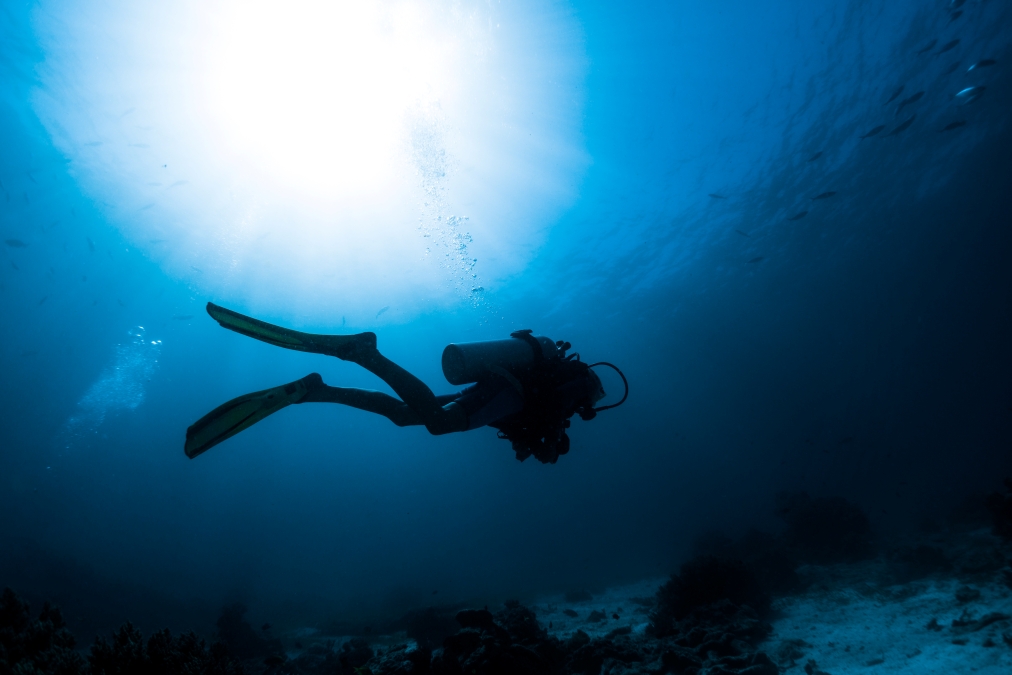
There’s no one-size-fits-all answer and really that’s the beauty of it. Choosing between buddy diving and solo diving depends on your goals, experience, training, and the conditions you’re diving in.
If you’re still working on your buoyancy, air consumption, or underwater awareness, diving with a buddy offers a safety net and a learning opportunity. It’s also the best choice when exploring new environments, trying out new gear, or diving in challenging conditions.
On the other hand, if you’re an experienced diver with hundreds of dives under your belt, trained in self-reliant techniques, and equipped with redundant systems, solo diving might offer the freedom and focus you’re looking for. This becomes particularly attractive when taking part in activities like underwater photography or surveys where you want to move at your own pace.
Ask yourself:
- What’s the objective of my dive?
- Do I feel 100% confident handling a problem alone?
- Am I properly trained and equipped for the style I’m choosing?
- Are the conditions appropriate for that approach?
Being honest about your comfort level and capabilities is one of the most important safety decisions you’ll ever make underwater.
Disclaimer: This article is not meant to advertise diving alone. Always properly evaluate if you need a companion or not.

